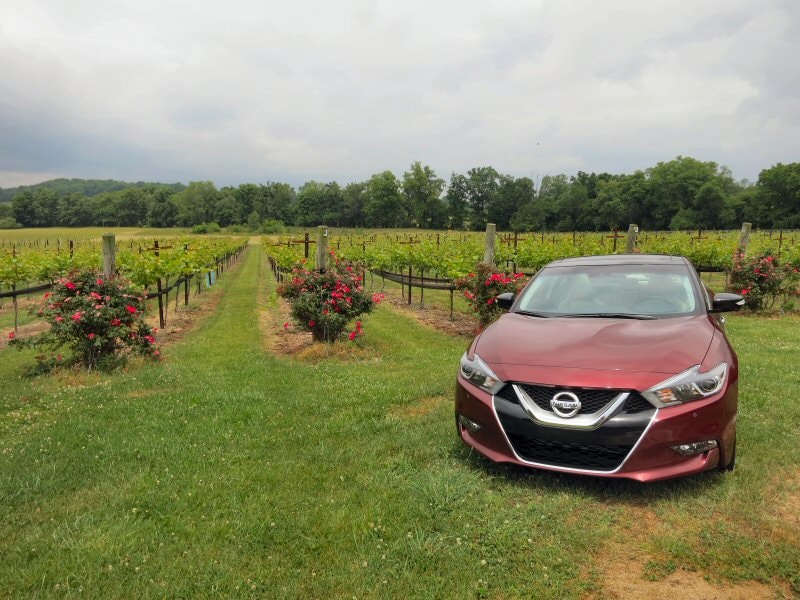Recent Articles
Popular Makes
Body Types
10 Cars with LED Lights that Outshine the Competition
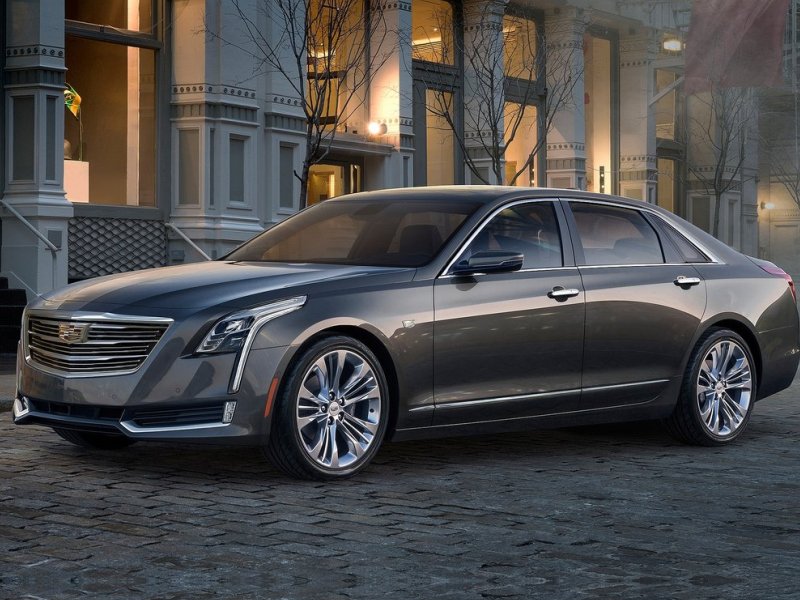
2016 Cadillac CT6
Cars with LEDs—or light-emitting diodes—have become increasingly popular in the U.S. marketplace, as the technology continues to trickle down from the luxury brands to a growing number of mainstream entries. Today’s list sheds some much-needed light on the subject, illuminating some of the most interesting LED applications currently available to customers from all points on the pricing spectrum.
2017 Volvo S90
Aiming to extend the success of the Volvo XC90 premium crossover—this year’s North American Truck of the Year and by far the best-selling vehicle in the lineup—the 2017 Volvo S90 flagship sedan showcases similar design and technology cues as its award-winning sibling, and that includes the striking “Thor’s Hammer” front LED DRLs (daytime running lights). Maybe looking more like T’s that have been tilted over on their sides, with their long legs pointing toward the car’s concave grille, they bisect the headlights and create a distinctive, immediately recognizable light signature for the car. Also, along with that 21st century ode to mighty Mjӧlnir, the S90 wears double-stacked, C-shaped LED taillights, set off by short horizontal light bars just below the top edge of the trunk, to help accentuate its rear appearance. The overall result widens the stance of the S90 visually to bolster its already athletic proportions, distinguishing it from other premium cars with LEDs.
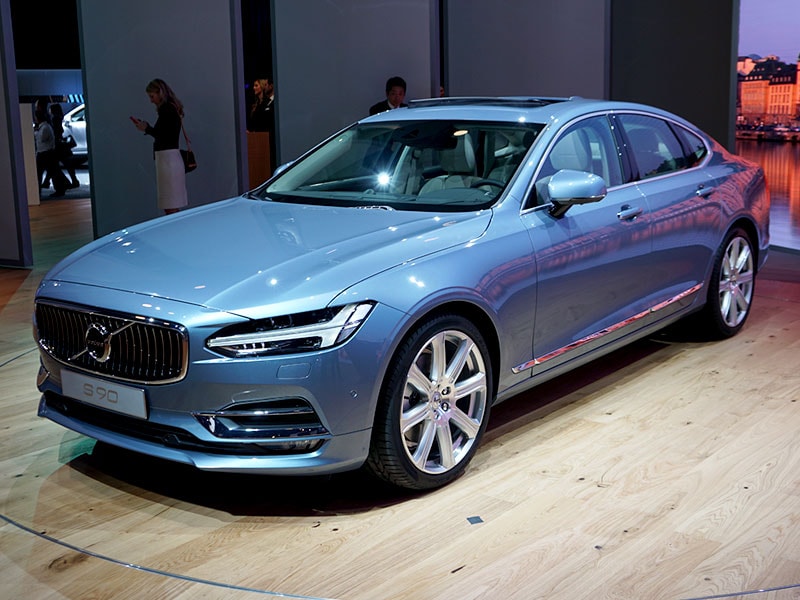
2016 Toyota Corolla
Cars with LEDs don’t have to be all that expensive anymore, either. Quite a few affordable small cars currently offer standard LED DRLs, for example, while some also follow up with available LED headlights. However, it’s the 2016 Toyota Corolla that raises the light bar by making both LED headlights and DRLs standard. It’s not a full LED setup, as the headlights actually combine LED low beams with halogen lamps for high-beam functionality, but good luck finding that elsewhere for the Corolla’s entry MSRP of $17,300. Nor is this a case of Toyota raising the price of entry purely to get customers to pay for that premium content. After all, the Corolla still undercuts its least expensive Honda rival by more than $1,300, and although it’s $75 more than a Ford, the Blue Oval product is missing both LED headlights and an automatic transmission as compared to the Corolla.
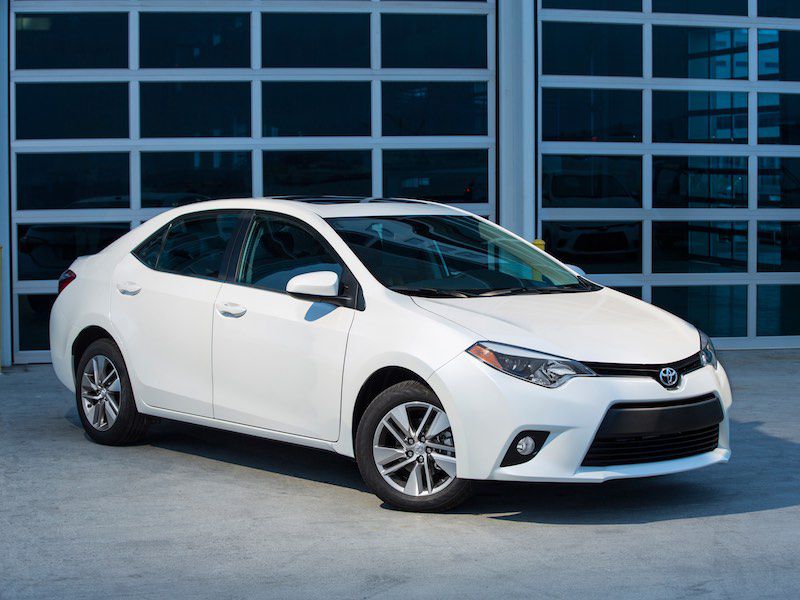
Photo by Toyota Media
2017 Acura NSX
Living the diamond life will come easy with the 2017 Acura NSX, as the high-tech supercar will furnish standard Jewel Eye LED headlights amongst its many lux performance cues. A hallmark of current-generation Acura design, the Jewel Eye setup relies on multiple, individual LEDs that slash across the front of the car on either side of the grille, then beam their light through appropriately gem-like lenses. Those, in turn, double the number of light sources and individually focuses each one for optimum illumination. The outer LEDs provide low-beam lighting, the inner units function as high beams, and they combine to serve as front DRLs as well. Acura stylists also provide subtle visual echoes of the Jewel Eye look for the car’s mirror-mounted turn-signal indicator and taillights, And unlike some cars with LEDs, which add the new-style illumination to otherwise unsophisticated vehicles, Acura’s 573-horsepower sport hybrid is backed by a “Popular Science” Best of What’s New award.

2017 Cadillac CT6
Dramatic exterior lighting has become de rigueur for today’s Cadillac cars, and the new 2017 Cadillac CT6 is no different. In fact, it starts with the same “Indirect Fire” LED technology that debuted on the Cadillac CTS. There, 16 LEDs flank each headlight in long vertical lines that have emerged as a common design theme for the brand’s products. It’s also worth noting that these LEDs pull double duty as both DRLs and turn-signal indicators, reducing the number of necessary lights in support of what Cadillac calls a “clean aesthetic.” The CT6 maintains those sharp vertical lines, of course, with new “light blades” that create a bolder frame for the vehicle’s face, along full LED headlights (instead of the CTS’ high-intensity discharge projector-beam setup). As a result, the CT6 should be a notable bright spot for luxury customers even when compared to other premium cars with LEDs.
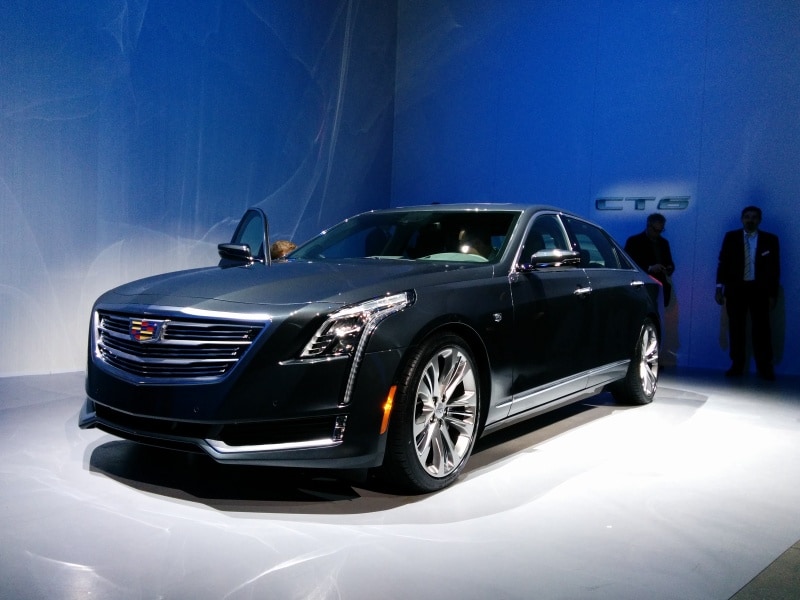
Photo by Benjamin Hunting
2017 Hyundai Elantra
Despite lowering the MSRP of the 2017 Hyundai Elantra by $100—bringing its cost down to $17,150—the Hyundai brand has turned up the candle power for its mainstream compact with a fresh array of LED lighting accents. Nor are those lights limited to the usual suspects at this price range. Thus, the LED taillights of the Elantra are adorned by tech-style graphics, creating extra visual flair, and there are LED turn-signal indicators available for the car’s exterior mirrors. The front DRLs also reflect obvious design effort in the way they brightly underline the vehicle’s headlights. But the Elantra additionally takes a page from the premium playbook by providing LED-enabled welcome lighting, which can shine from the door handles when the car’s keyfob is detected.
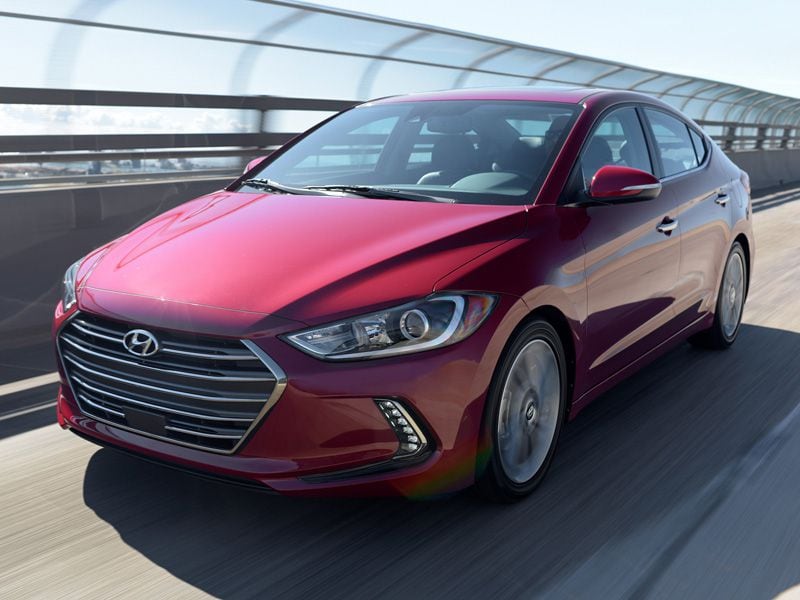
2016 Lexus RC-F
Most cars with LEDs rely on them to focus attention on the front end, where they can catch the eye on first glance. The 2016 Lexus RC-F, on the other hand—because it’s a sports coupe developed to show other drivers its taillights—does just that with a fairly radical rear light signature. More specifically, the RC-F features 48 rear LEDs, with 24 on each side; from there, an intricate series of lens, including outer lens with unique, serrated edges, multiply the effect so that it appears as if there were 100 total LEDs, all sparkling under the light like “glittering gems”—at least according to Lexus. The brand further employs 3D surfacing to emphasize the “L” shape of the back combination lamps, and the Lexus “L” also appears in the front DRLs. The RC-F supplies LED headlights, too, with designers purposely separating them from the DRLs to create a more anthropomorphic face to the car.
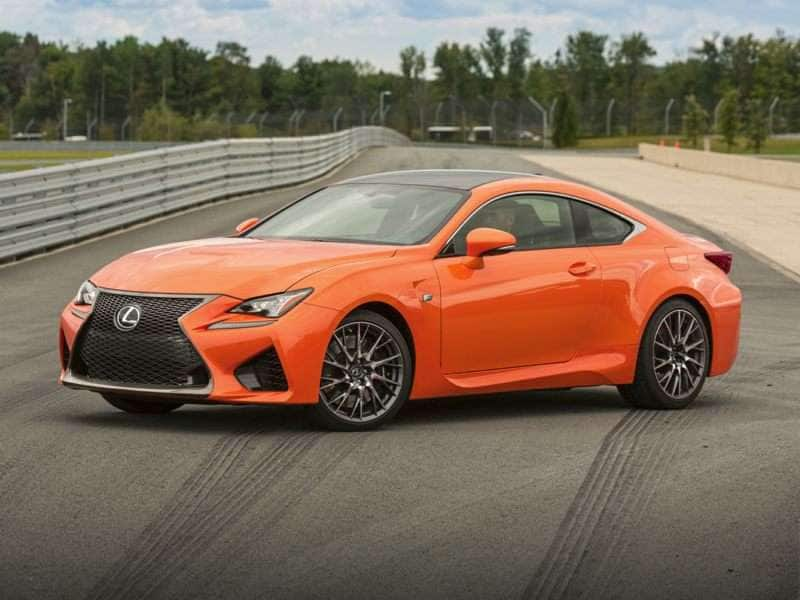
Photo by Lexus
2016 Ford Mustang
Cars with LEDs are a relatively new phenomenon in the auto industry, but for the 2016 Ford Mustang, designers used that technology to remind folks of some iconic old-school style touches. For instance, up front, the original Ford Mustang featured three shark-style “gills” molded into the area on each side of the grille, between that and the headlight housings. The 2016 model updates that look by deploying three angled LED light strips just inboard of its HID headlamps. Meanwhile, the traditional tri-bar taillights—available as sequential turn signals in models like the Mustang GT—are illuminated by indirect LEDs. Mustang mavens who crave classic lighting details also should take note: The 2016 GT additionally reintroduces hood-mounted turn-signal blinkers as standard equipment. Finally, there’s an especially innovative display of LED expertise in the cabin of the Mustang Shelby GT350, which takes advantage of that technology for its heads-up Performance Shift Light indicator.
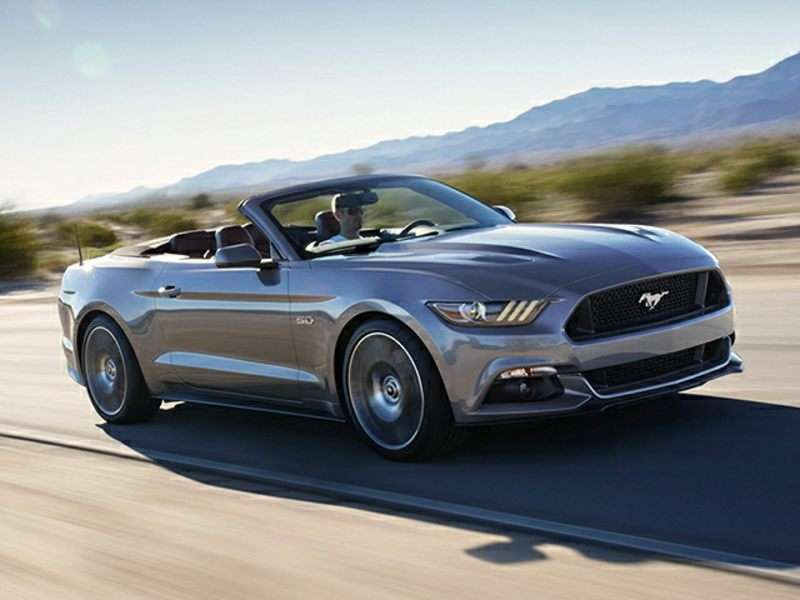
Photo by Ford
2017 Mercedes-Benz E-Class
As the pinnacle of the MB car portfolio, the S-Class can out-lux just about any full-size cars with LEDs currently sold in this country. It may have trouble with one of the mid-sizers, though, since its own smaller teammate—the all-new 2017 Mercedes-Benz E-Class—has been so thoroughly upgraded for the new selling season. Among the changes: a new LED ambient-lighting system that allows owners to accent the cabin in one of 64 different colors. The LED exterior lighting for the E-Class is quite extensive as well, including a choice between a high-performance headlamp package with “double torch” LED DRL accents and the envelope-pushing “MULTIBEAM” active LEDs. The latter leverages 84 LEDs per headlamp, all capable of being individually controlled to deliver benefits like dynamic-cornering illumination and intelligent adaptive lighting. There’s a nifty effect at the rear, too, thanks to tiny built-in taillamp reflectors that seem to create a star-strewn surface for the lights.
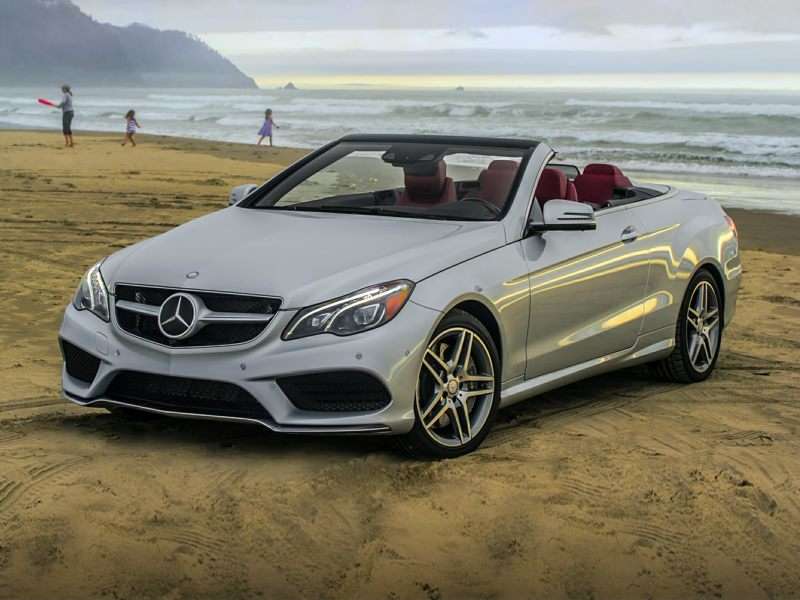
2016 BMW i8
Truth be told, cars with LEDs are no longer right on the leading edge in terms of lighting technology. That honor now goes to vehicles like the 2016 BMW i8—the Bavarians’ plug-in hybrid supercar—since they now supply laser lighting that’s both 1,000 times more intense than that of traditional LEDs and some 70 percent more efficient. And while those don’t happen to be legal yet in the United States, the i8’s “regular” LEDs do make for the ideal complement to its scissor-doored exterior, particularly at the back of the car: Designers took advantage of the multi-dimensional, highly aerodynamic body of the i8 to split the rear light treatments horizontally, mounting the upper units at the trailing edge of a long, flowing aero panel, and next deploying U-shaped LEDs beneath—and leaving a dramatic, architecturally influenced gap between the two at the outside edge of vehicle.
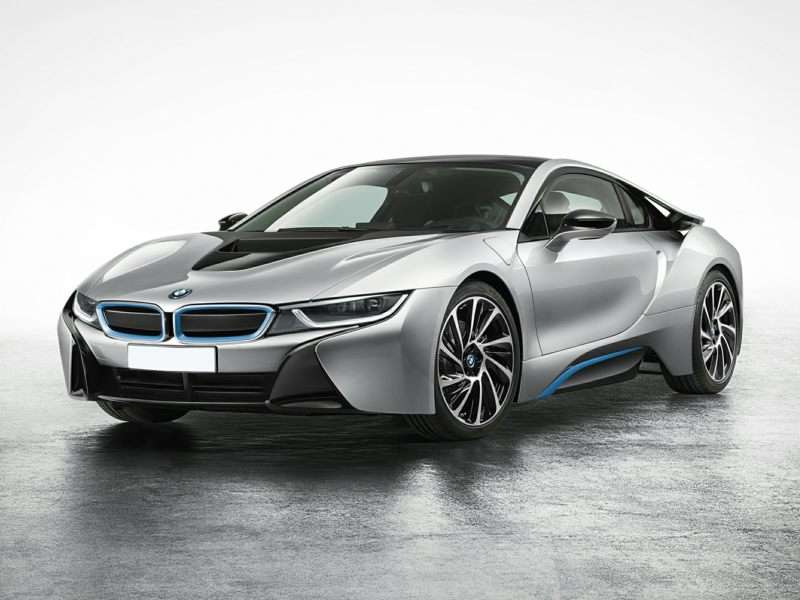
Photo by BMW
2016 Nissan Maxima
Like any cars with LEDs that are worth their salt, the 2016 Nissan Maxima spices up its exterior with an expressive design and an exclusive light signature. For the “4-door sports car,” that means the new Nissan “boomerang” headlights that premiered on the next-gen Murano crossover, complete with multi-angled LED DRLs for aggressive accents. Two-piece LED taillights stretch onto the trunk of car and dominate the styling in the stern of Nissan’s flagship sedan, and the athletically oriented Maxima SR serves up additional LED bonus. Along with its sport-tuned suspension, leather-appointed seating and 19-inch aluminum-alloy wheels, the SR trim tops things off with low-beam LED headlights. Shoppers also should remember that the new Maxima goes beyond it LED-led design efforts to deliver more than a modicum of real-world performance, courtesy of a 3.5-liter V6 that earned a place on the most recent list of Wards 10 Best Engines of 2016.
